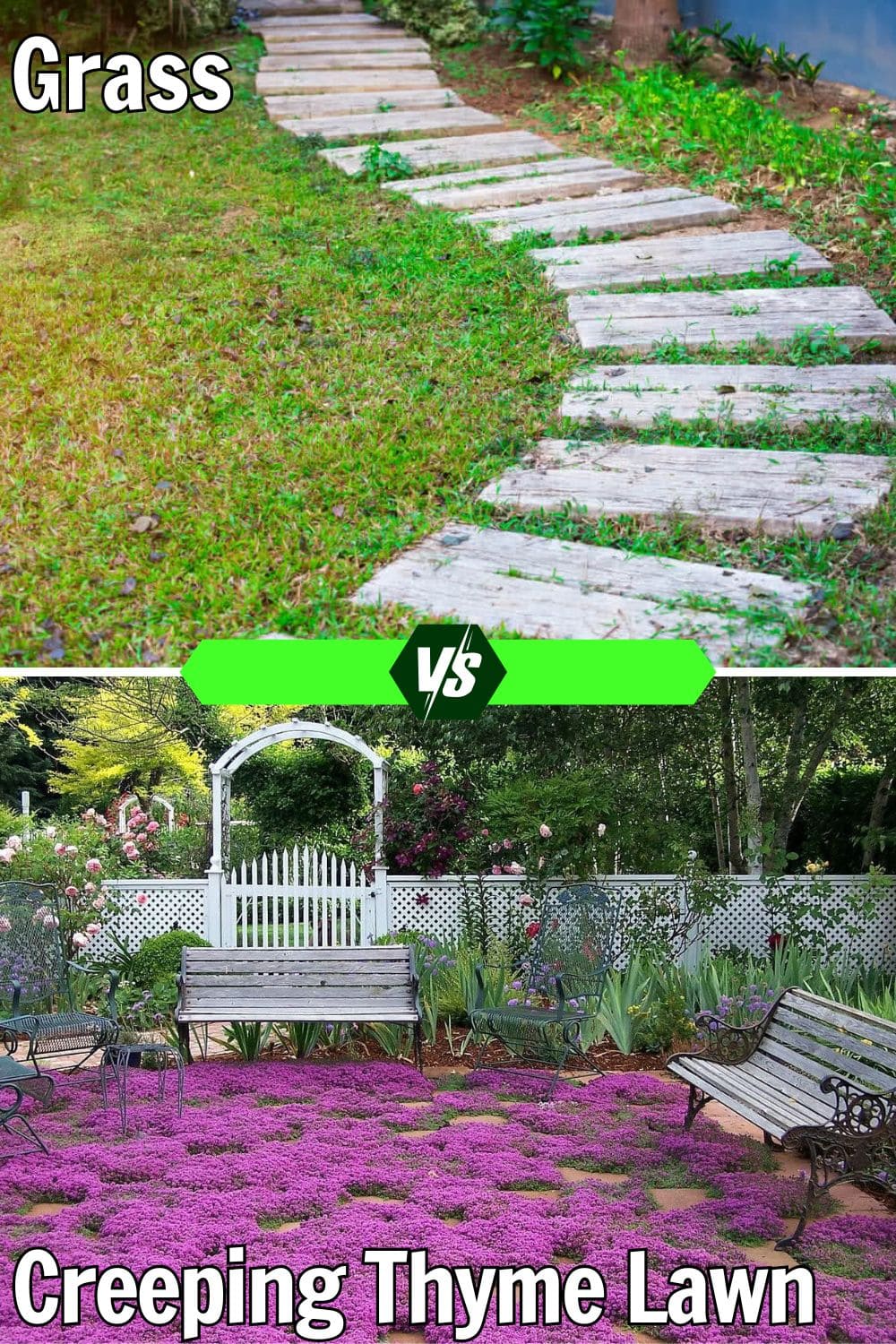As an experienced gardener, I’ve spent years tending to all kinds of landscapes like traditional grass lawns, flower beds, veggie patches, you name it.
But if there’s one switch I’ve seen transform yards, it’s swapping out a standard grass lawn for a creeping thyme lawn. Trust me, it’s not just a trendy buzzword – it’s a game-changer.
Here’s why I think you should seriously consider making the leap from grass to creeping thyme, based on my own hands-on time in the dirt and the practical perks I’ve come to love.
The Grass Struggle Is Real
Let’s be honest: maintaining a grass lawn is a grind. I’ve wrestled with my fair share of patchy spots, crabgrass invasions, and that relentless mowing cycle, every weekend in the summer, rain or shine.
Then there’s the watering. In dry spells, you’re either glued to a hose or watching your water bill skyrocket. And don’t get me started on fertilizers and weed killers, half the time, I felt like I was fighting nature instead of working with it.
Grass looks great when it’s lush and green, sure, but keeping it that way? It’s a full-time job.
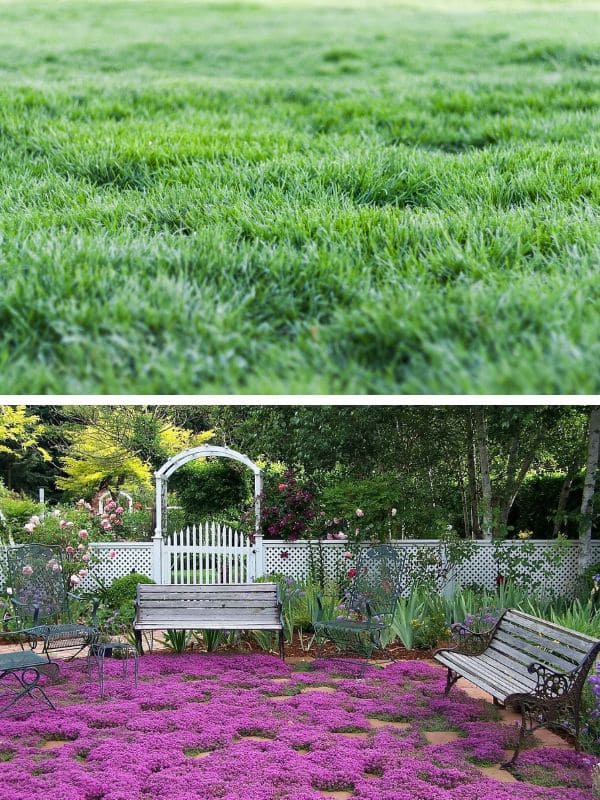
Creeping thyme, on the other hand, feels like nature’s gift to the tired gardener. I planted my first patch years ago as an experiment, and I’ve never looked back. It’s not just easier, it’s smarter, prettier, and honestly, more fun.
What’s So Special About Creeping Thyme?
If you haven’t met creeping thyme yet, picture this: a low-growing, carpet-like plant that spreads out into a soft, fragrant mat.
I’m talking tiny evergreen leaves and bursts of little flowers including purple, pink, or red, depending on the variety that bloom in summer and bring bees buzzing happily to your yard.
I’ve used Thymus serpyllum (wild thyme) and red creeping thyme (Thymus praecox ‘Coccineus’) most often, and they’re tough as nails once they settle in.
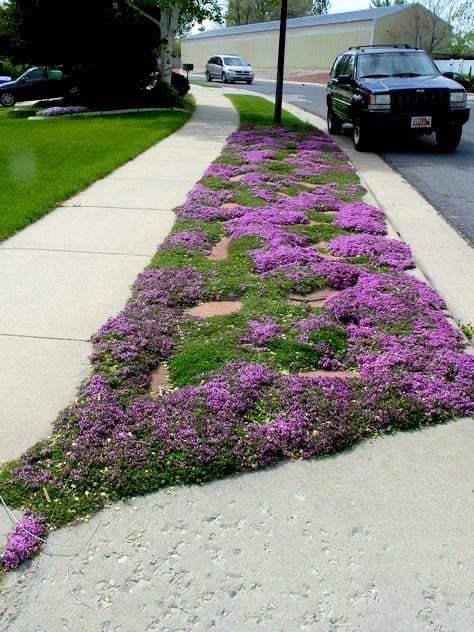
Step on it, and you get a whiff of that classic thyme scent – herbal and fresh, like something out of a kitchen garden.
It grows maybe 2 to 6 inches tall, so you’re not hacking it down with a mower every week. It’s the kind of plant that makes you wonder why we’ve been so obsessed with grass in the first place.
Why Creeping Thyme Wins, Hands Down
1. Low Maintenance, High Reward
Grass needs constant mowing, edging, and fussing. Creeping thyme? Once it’s established (give it a year or two to fill in), you can pretty much leave it alone.
I trim mine once a season, maybe, just to tidy up after the blooms fade. No mower required, just a pair of shears if I’m feeling fancy. It’s a huge time-saver, and my back thanks me every summer.
2. Water Wise and Drought Tough
I’ve watched grass lawns turn to crispy straw during dry spells, but creeping thyme just shrugs it off. It’s built for lean conditions, think Mediterranean hillsides, and thrives with minimal watering once its roots are set.
I’ve gone weeks without touching mine during droughts, and it still looks lush. Compare that to grass, where you’re either soaking it daily or watching it die. With water restrictions popping up more often these days, thyme’s a no-brainer.
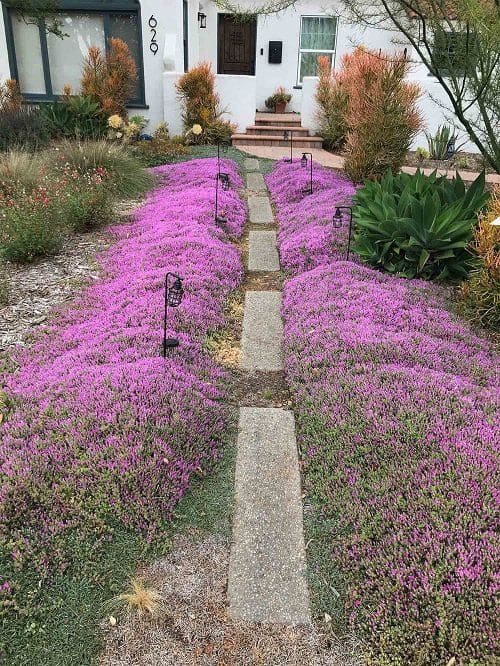
3. Eco-Friendly Vibes
Grass lawns guzzle fertilizer and often need chemical weed control, which isn’t great for the soil or the critters living in it.
Creeping thyme, though? It’s a pollinator magnet like bees and butterflies adore those flowers. Plus, it naturally chokes out most weeds once it thickens up.
4. Year-Round Good Looks
Grass can look sad and brown in winter or during dry summers, but creeping thyme keeps its evergreen charm going strong.
Even in colder climates (I’m in Zone 5, for reference), it holds its own, giving my yard some life when everything else is dormant. And those summer blooms are a showstopper, way more interesting than a flat green carpet.
5. Cost Over Time
Sure, planting thyme costs more upfront—seeds are cheap but slow, and plugs or plants add up fast. I spent a bit to get mine going, spacing plugs about a foot apart to let them spread.
But after that initial investment, you’re done. No more gas for the mower, no more fertilizers, no more water bills that make you wince. Grass might be cheaper to seed, but it’s a money pit long-term.
Where Grass Still Has an Edge
I’ll give credit where it’s due – grass isn’t useless. If you’ve got kids or dogs tearing around the yard daily, grass handles heavy foot traffic better.
Creeping thyme can take light walking (I stroll across mine to the garden shed no problem), but it’s not built for a soccer game or a rambunctious pup.
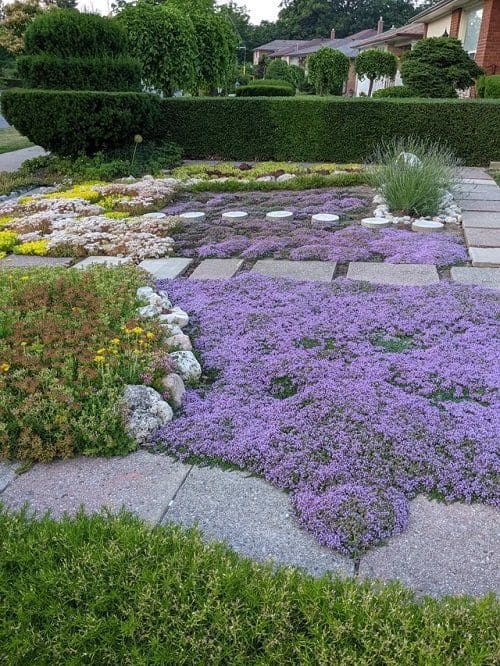
And if you love that classic, manicured lawn look, thyme’s wilder, more natural vibe might not be your cup of tea. It’s a trade-off, but for me, the pros far outweigh the cons.
Making the Switch: How to Get Started
Now if you are ready to ditch the grass, first, pick a sunny spot as creeping thyme loves at least 6 hours of direct light.
Clear out the grass (I’ve used a sod cutter or just smothered it with cardboard and mulch), then loosen the soil. Too much clay or sogginess, and you’ll lose it to rot.
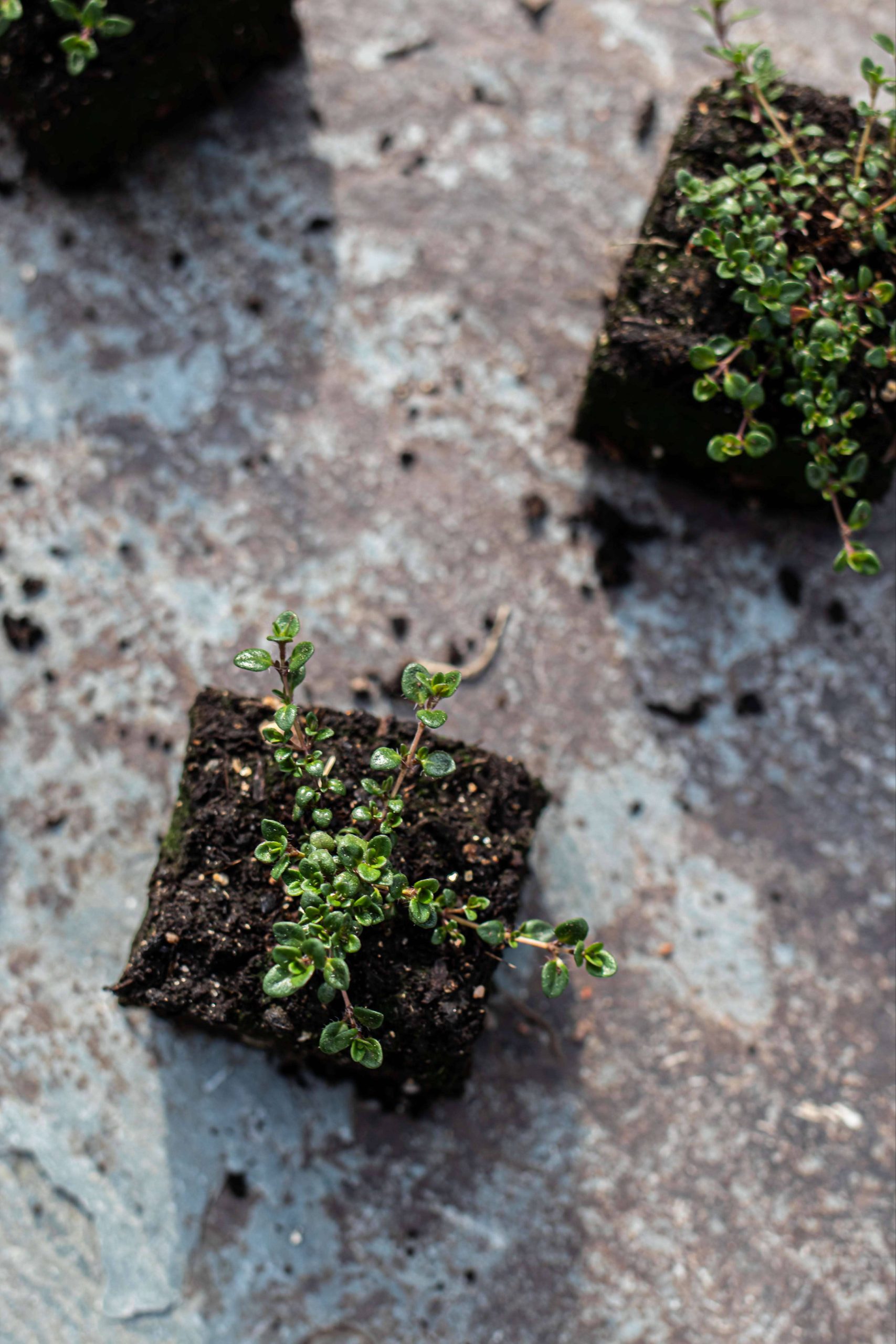
You can sow seeds if you’re patient (they’re tiny and take time), but I recommend plugs or small plants for faster results. Space them 6-12 inches apart, water them well to get them going, and keep weeds at bay for the first season.
I mulch lightly with gravel or bark to help them settle in. By year two, you’ll see that gorgeous carpet forming, and by year three, it’s a done deal.
